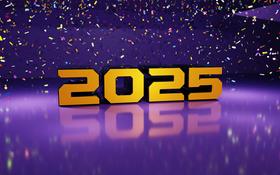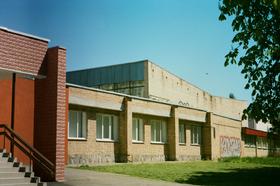For the 2025-26 school year, there are 3 public middle schools serving 1,563 students in Fayetteville, AR. The top ranked public middle schools in Fayetteville, AR are Woodland Junior High School, Fayetteville Virtual Academy District Conversion Charter School and Ramay Junior High School. Overall testing rank is based on a school's combined math and reading proficiency test score ranking.
Fayetteville, AR public middle schools have an average math proficiency score of 53% (versus the Arkansas public middle school average of 37%), and reading proficiency score of 54% (versus the 42% statewide average). Middle schools in Fayetteville have an average ranking of 10/10, which is in the top 10% of Arkansas public middle schools.
Minority enrollment is 35% of the student body (majority Hispanic and Black), which is less than the Arkansas public middle school average of 41% (majority Black).
Best Public Middle Schools in Fayetteville, AR (2025-26)
School
(Math and Reading Proficiency)
(Math and Reading Proficiency)
Location
Quick Facts
Rank: #11.
Woodland Junior High School
(Math: 66% | Reading: 61%)
Rank:
Rank:
10/
Top 5%10
1 E Poplar St
Fayetteville, AR 72703
(479) 444-3067
Fayetteville, AR 72703
(479) 444-3067
Gr: 7-8 | 713 students Student-teacher ratio: 13:1 Minority enrollment: 27%
Rank: #22.
Fayetteville Virtual Academy District Conversion Charter School
Charter School
(Math: 50-54% | Reading: 59%)
Rank:
Rank:
9/
Top 20%10
300 S Ray Ave
Fayetteville, AR 72701
(479) 444-3085
Fayetteville, AR 72701
(479) 444-3085
Gr: K-12 | 129 students Student-teacher ratio: 9:1 Minority enrollment: 13%
Rank: #33.
Ramay Junior High School
(Math: 38% | Reading: 43%)
Rank:
Rank:
6/
Top 50%10
401 S Sang Ave
Fayetteville, AR 72701
(479) 444-3064
Fayetteville, AR 72701
(479) 444-3064
Gr: 7-8 | 721 students Student-teacher ratio: 13:1 Minority enrollment: 48%
Fayetteville, Arkansas Public Schools (Closed)
School
Location
Quick Facts
2350 Old Farmington
Fayetteville, AR 72702
(479) 444-3058
Fayetteville, AR 72702
(479) 444-3058
Gr: 10-12 | 156 students Student-teacher ratio: 9:1 Minority enrollment: 21%
612 South College
Fayetteville, AR 72702
(479) 444-3087
Fayetteville, AR 72702
(479) 444-3087
Gr: K-5 | 324 students Student-teacher ratio: 14:1 Minority enrollment: 50%
Frequently Asked Questions
What are the top ranked public middle schools in Fayetteville, AR?
The top ranked public middle schools in Fayetteville, AR include Woodland Junior High School, Fayetteville Virtual Academy District Conversion Charter School and Ramay Junior High School. Fayetteville has one of the highest concentrations of top ranked public schools in Arkansas.
How many public middle schools are located in Fayetteville?
3 public middle schools are located in Fayetteville.
What is the racial composition of students in Fayetteville?
Fayetteville public middle schools minority enrollment is 35% of the student body (majority Hispanic and Black), which is less than the Arkansas public middle schools average of 41% (majority Black).
Which public middle schools in Fayetteville are often viewed compared to one another?
Popular comparisons of public middle schools in Fayetteville include: Ramay Junior High School vs. Woodland Junior High School, Woodland Junior High School vs. Ramay Junior High School
Recent Articles

Texas Schools Enrollment Trends & Policy in 2025
Latest data and policy changes on Texas public school enrollment growth, funding, and virtual education in 2025.

Financial Aid & Hidden Costs in Public Schools
Learn about financial aid and hidden costs in public schools. Discover what parents should budget for beyond tuition-free education.

NYC Schools Still Most Segregated in 2025
Despite reforms, New York City schools remain the most segregated in the U.S. in 2025. Here’s what parents and educators need to know.
